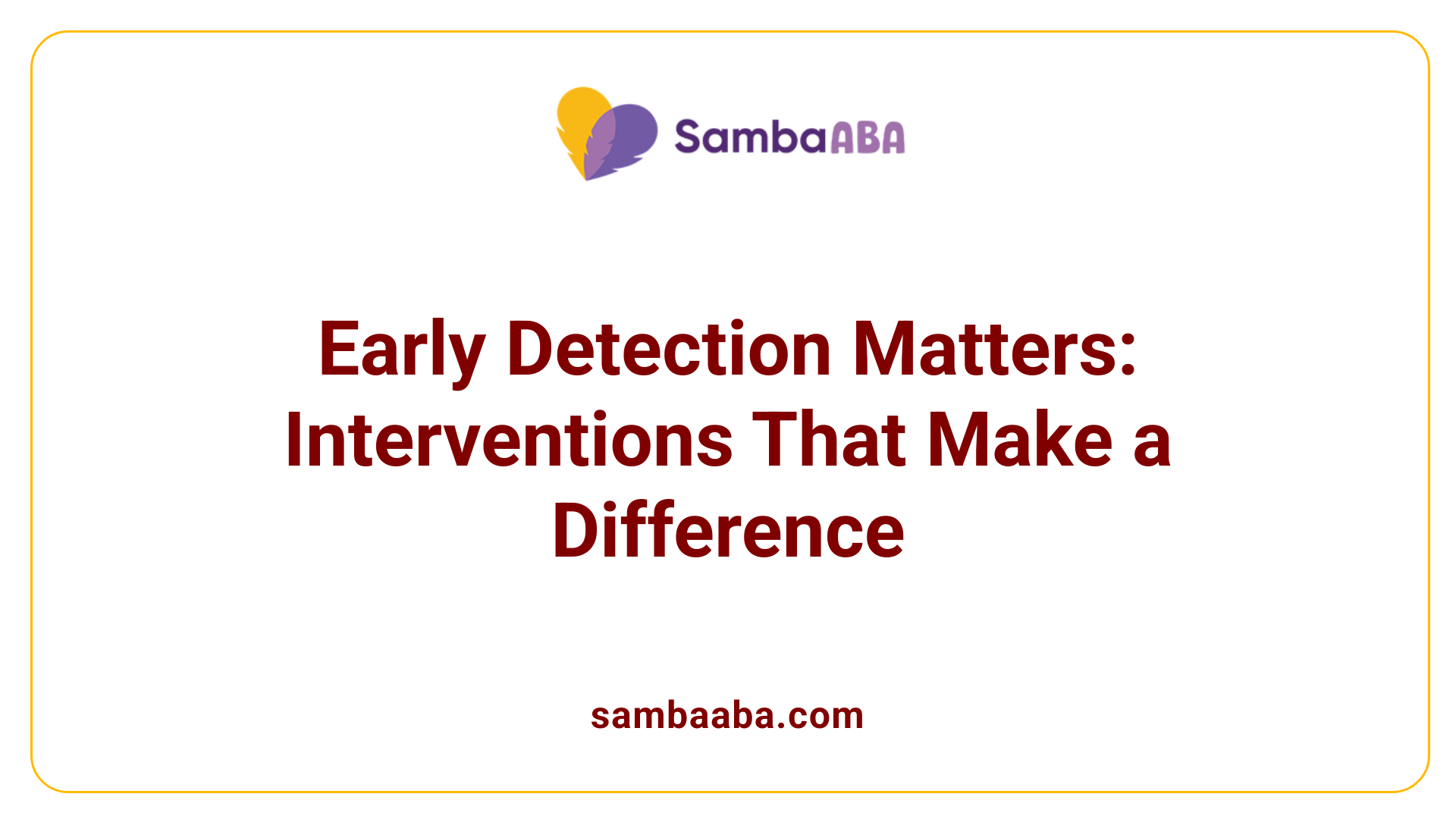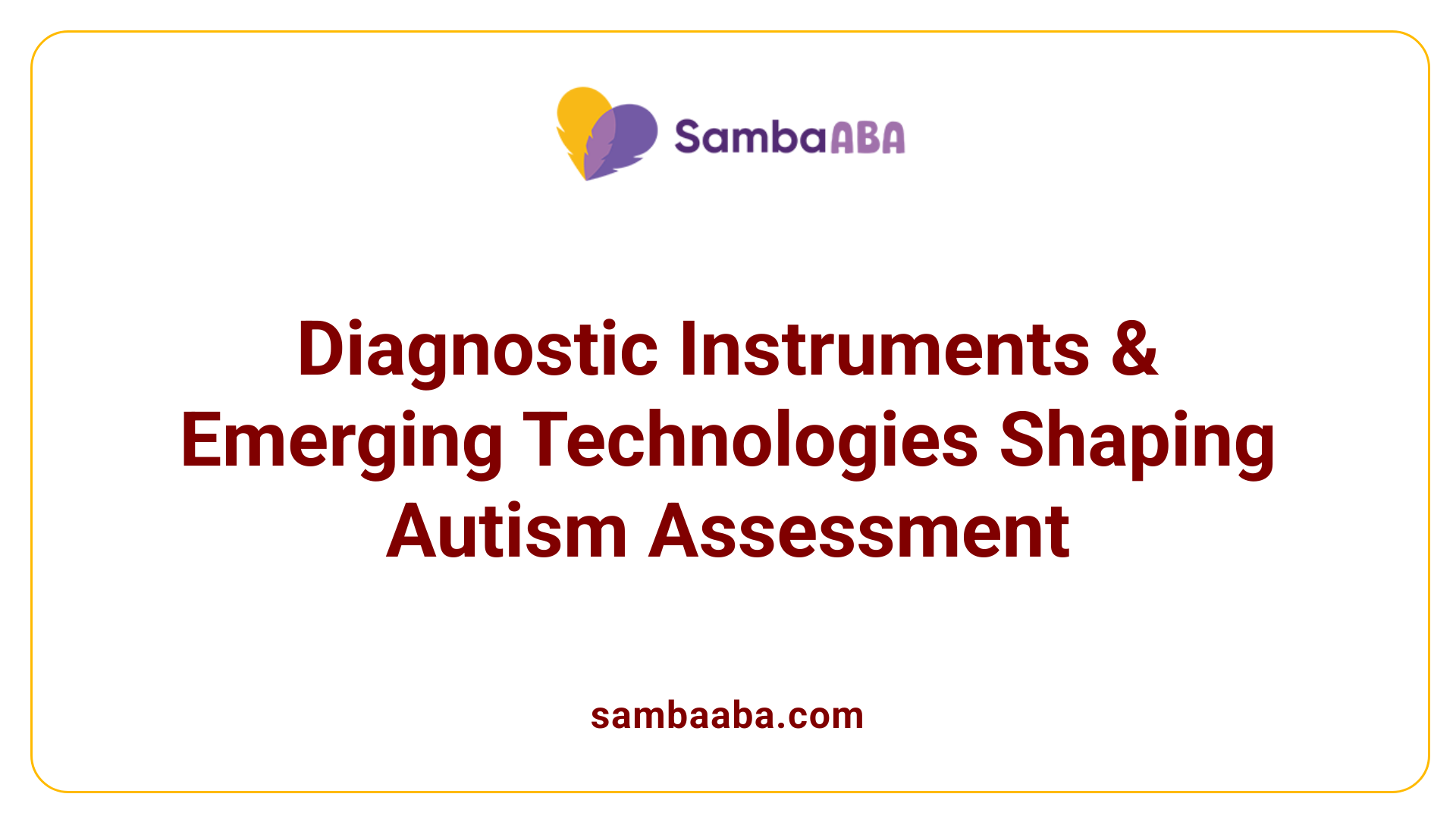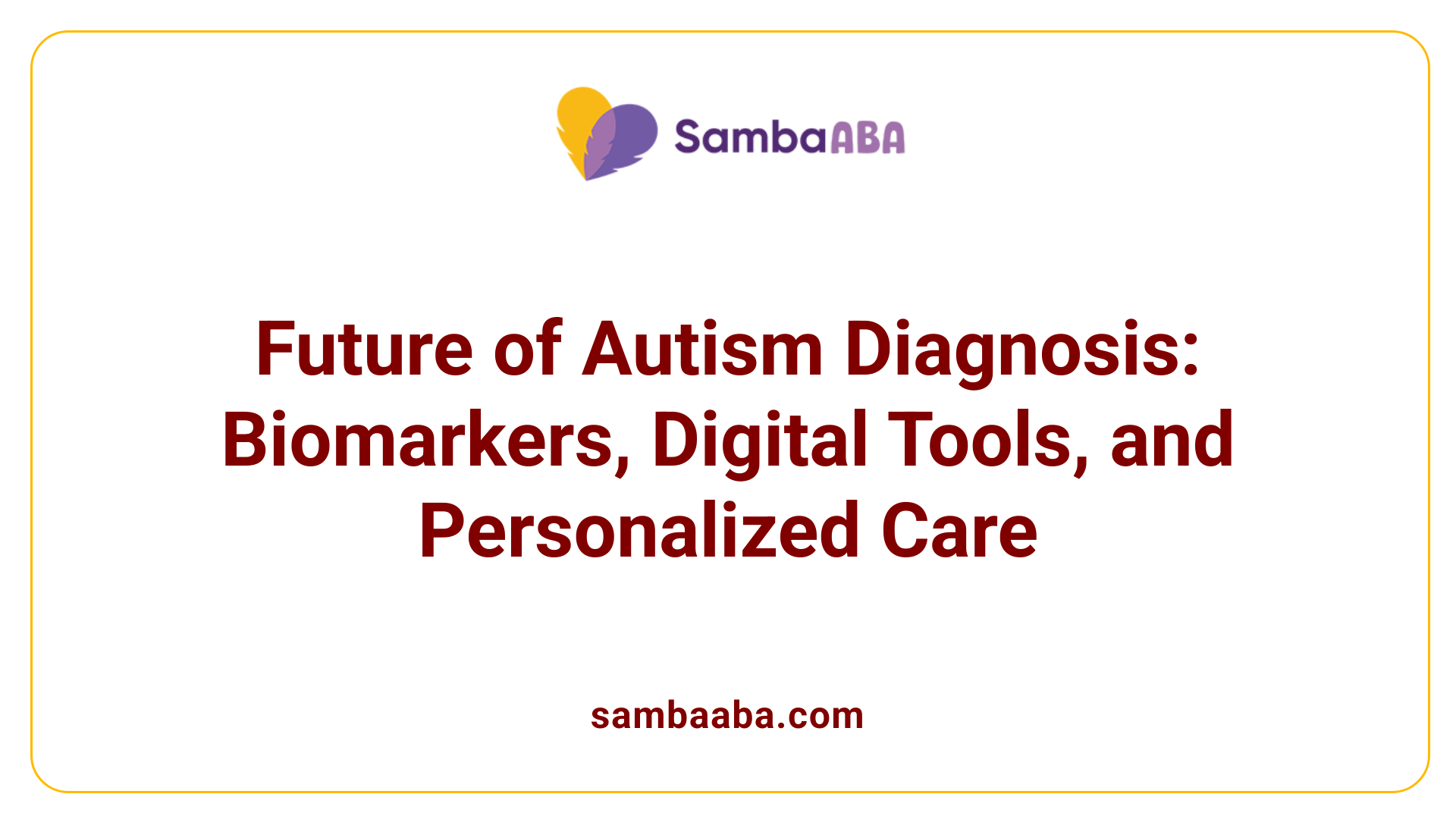Autism Evaluation
Navigating the Path to Autism Diagnosis: Effective Evaluation Strategies
Understanding Autism Evaluation
Autism spectrum disorder (ASD) is a complex neurodevelopmental condition characterized by difficulties in social interaction, communication, and repetitive behaviors. Since there is no medical test for autism, diagnosis hinges on behavioral assessments, developmental histories, and specialized observation tools. This article delves into the processes, tools, and importance of autism evaluation, providing a comprehensive guide for parents, caregivers, and professionals.
The Foundations of Autism Screening and Assessment

What are the main signs and symptoms of autism?
Main signs and symptoms of autism include difficulties understanding others' thoughts, feelings, and social cues, leading to challenges in social interactions and making friends. Individuals may prefer solitary activities, have intense interests, and adhere to strict routines. Common behaviors also include repetitive movements such as hand-flapping or rocking, taking things literally, and sensitivity to sounds, lights, or touch. Communication difficulties may involve delayed language development, unusual speech patterns, or trouble expressing emotions.
Additionally, signs can vary widely among individuals. Some may mask or hide their traits, especially girls and adults, which can make diagnosis more complex. Recognizing these behaviors early can lead to more effective support and intervention strategies.
Why is early detection and diagnosis of autism important?
Early detection is vital because it allows for interventions at a critical period of brain development. Children diagnosed with autism before age 2.5, especially around 1 to 3 years old, tend to show significant improvements in social, language, and behavioral skills.
Timely diagnosis enables families and health professionals to implement therapies such as speech, occupational, and behavioral interventions early on. This can reduce frustration, improve social responsiveness, and support independence. Early identification also opens access to educational supports and resources essential for a child's growth.
Overall, catching autism early offers the best chance for children to reach their full potential, making it a priority in pediatric health care.
Are there screening tools or questionnaires for autism?
Yes, several standardized screening tools help identify early signs of autism. One of the most widely used is the Modified Checklist for Autism in Toddlers, Revised (M-CHAT-R), designed for children aged 16 to 30 months.
Other tools include the SACS-R and SACS-PR (for ages 12 to 60 months), the SCSQ (for school-aged children), and the AQ Test (for individuals 16 years and older). These assessments involve questionnaires filled out by parents or caregivers that evaluate behaviors associated with autism.
It's important to note that a positive screening does not confirm a diagnosis. Instead, it indicates the need for a thorough evaluation by healthcare professionals to determine if further assessment or intervention is necessary.
Can adults be evaluated or screened for autism?
Absolutely. While autism is often diagnosed in childhood, many adults seek assessment to understand themselves better or access support services. Adult evaluations involve detailed developmental histories, behavioral observations, and sometimes questionnaires like the Autism Spectrum Quotient.
Since adults often mask or develop coping strategies for their traits, the assessment can be more challenging. Experienced clinicians, especially those in specialized centers, conduct comprehensive evaluations that may include interviews with family members and review of past medical or educational records.
A confirmed diagnosis in adulthood can facilitate access to social resources, employment support, and tailored therapies, improving quality of life.
What are the common methods used to evaluate and diagnose autism?
Diagnosis relies on behavioral assessments, developmental history, and the use of standardized tools. Since there are no medical tests like blood work or brain scans that can diagnose autism, clinicians focus on observable behaviors.
Standard methods include developmental monitoring, screening, and formal assessments. During routine checkups at 9, 18, and 30 months, healthcare providers screen for signs of autism using tools like the M-CHAT.
If screening indicates potential autism, a detailed evaluation follows, often involving gold-standard diagnostic instruments such as the Autism Diagnostic Observation Schedule (ADOS) and the Autism Diagnostic Interview-Revised (ADI-R). These tools help evaluate social communication skills and repetitive behaviors.
Evaluation also considers sensory challenges, medical history, and cognitive functioning to inform diagnosis and necessary interventions.
What should I expect during an autism assessment?
An autism assessment typically involves multiple stages and a team of specialists like psychologists, pediatricians, and speech therapists. The process begins with collecting a comprehensive developmental history from parents or caregivers.
The clinician observes the individual during structured tasks and play sessions, using diagnostic tools like ADOS. They may also request questionnaires and reports from teachers or other caregivers.
In children, physical exams and developmental testing are common. For older individuals, assessments focus on behavioral patterns and history, often supplemented with questionnaires.
The goal is to identify strengths and challenges, confirming whether the individual meets diagnostic criteria based on DSM-5. After the assessment, a detailed report is shared, outlining the diagnosis and recommending support services.
What are the criteria for diagnosing autism?
The DSM-5 outlines specific criteria for ASD diagnosis. These include persistent deficits in social communication and social interaction across various contexts, such as difficulties in making eye contact, understanding non-verbal cues, and forming relationships.
Additionally, individuals exhibit restricted, repetitive behaviors and interests, like stereotyped movements, insistence on routines, or intense focus on specific topics.
Symptoms must be present in the early developmental period, though they may not fully manifest until social demands increase. Diagnosis relies on behavioral observations and developmental history, not biological tests.
Timely diagnosis allows for early intervention, which is crucial in improving long-term outcomes.
Tools and Guidelines for Autism Evaluation

What are the criteria for diagnosing autism?
The diagnosis of autism spectrum disorder (ASD) is based on specific behavioral criteria outlined in the DSM-5. It includes persistent challenges in social communication and social interaction across various contexts. For instance, individuals may struggle with making eye contact, understanding non-verbal cues, or forming meaningful relationships. Additionally, they often exhibit restricted and repetitive behaviors, such as stereotyped movements, inflexibility, or intense focus on particular interests.
These symptoms usually appear in early childhood, typically before age three, but might be recognized later. Since there are no medical tests like blood work for diagnosing ASD, professionals rely on thorough behavioral assessments, developmental history, and direct observation. Multiple specialists—including psychologists, pediatricians, and neurologists—collaborate to ensure an accurate diagnosis. Early detection through screening tools like the M-CHAT-R/F, followed by comprehensive evaluation, can greatly improve intervention outcomes.
What assessment tools are used for diagnosing autism?
A variety of diagnostic instruments help clinicians evaluate autism symptoms systematically. Commonly used tools include:
| Tool Name | Age Range | Purpose | Additional Information |
|---|---|---|---|
| ADOS™-2 | Toddlers to Adults | Structured observation of social and communication behaviors | Considered the gold standard for ASD diagnosis |
| ADI-R | Early childhood to adulthood | Detailed interview about developmental history | Complements observational assessments |
| STAT | Toddlers aged 24-30 months | Screening and observational assessment | Useful for early screening |
| CARS | Children and adolescents | Behavioral rating scale | Used for diagnosis and severity assessment |
| Tele-ASD-Peds | Remote assessment | Video-based observation | Facilitates telehealth diagnosis |
Additional assessments include tests for cognitive development, sensory functioning, and screening for co-occurring conditions. Trained clinicians interpret results based on DSM-5 criteria, ensuring a standardized and reliable diagnosis.
How do guidelines influence autism evaluation procedures?
Guidelines from authoritative organizations like the CDC, AAP, NICE, and SIGN shape best practices for autism assessment. They emphasize early and routine developmental monitoring, suggesting specific ages—especially 18 and 24 months—for screening. The use of validated screening tools such as the M-CHAT-R/F during well-child visits helps detect early signs.
Once screening indicates possible ASD, comprehensive assessments involving multidisciplinary teams are recommended. These include psychologists, speech therapists, pediatricians, and other specialists working together to confirm the diagnosis through formal instruments like ADOS-2.
Protocols also recommend ongoing monitoring over time, as early signs might evolve, and early intervention is vital. Adherence to these guidelines ensures consistency, enhances detection accuracy, and supports timely intervention, which has proven to improve lifelong outcomes.
What role do emerging technologies play in autism assessment?
Recent advances are dramatically transforming how autism is assessed. Telehealth and remote diagnostic tools, such as Tele-ASD-Peds, make assessments more accessible, especially during circumstances that limit in-person visits.
Digital assessments, including eye-tracking devices and game-based evaluations, provide deeper insights into social attention and cognitive processes. For example, eye-tracking examines how children focus on social stimuli, which can reflect autism-related differences.
Artificial intelligence and machine learning algorithms analyze behavioral data collected from assessments, helping detect subtle signs often missed by traditional methods. These technologies support longitudinal tracking and ongoing monitoring, offering a richer, nuanced understanding of each individual.
Integration of such innovations with established assessment protocols promises enhanced diagnostic precision, earlier detection, and broader reach, ultimately enabling more effective and timely interventions.
What is involved in a comprehensive autism evaluation for clinical and research purposes?
A thorough autism assessment integrates multiple sources of data and specialized testing to ensure a precise understanding of an individual’s condition. Core components include:
- Use of gold-standard diagnostic tools like ADOS-2 and ADI-R to observe behaviors and gather developmental history.
- Standardized cognitive, language, and adaptive behavior assessments to pinpoint strengths and challenges.
- Collection of medical history, including genetic testing for syndromes such as fragile X or Rett syndrome.
- Evaluation of sensory processing, co-occurring conditions, and functional skills.
In research settings, additional techniques such as neuroimaging, electrophysiological studies, and biological marker analysis are incorporated. These comprehensive evaluations involve interdisciplinary teams—comprising psychologists, neurologists, speech therapists, and geneticists—to create a detailed profile.
The goal is not only to diagnose ASD accurately but also to inform tailored interventions and contribute to the scientific understanding of autism. This approach ensures that intervention strategies are personalized, effective, and evidence-based.
The Future of Autism Evaluation and Diagnosis

What are the criteria for diagnosing autism?
The diagnosis of autism spectrum disorder (ASD) relies on behavioral assessments and developmental history rather than medical tests. According to the DSM-5 criteria, ASD is characterized by persistent challenges in social communication and interaction across various settings. This may include difficulties with eye contact, understanding non-verbal cues, and forming relationships. Additionally, individuals often display restricted, repetitive behaviors or interests, such as stereotypical movements, inflexibility, or intense focus on specific topics.
These symptoms typically appear early in development, usually before age three, although recognition can occur later. Diagnosis involves comprehensive evaluations by specialists like psychologists, pediatricians, or neurologists, who observe behaviors, review developmental history, and perform assessments. Early detection is vital because timely intervention can lead to better developmental outcomes. Screening tools, such as the M-CHAT-R/F, help identify children at risk, prompting further diagnostic assessment. Importantly, there are no medical tests—such as blood work or brain scans—that confirm ASD.
How might future developments impact autism diagnosis?
Research and technological advances are poised to significantly reshape autism diagnosis in the coming years. One major focus is on identifying biological markers or biomarkers—measurable indicators associated with ASD—that could provide more objective and earlier diagnosis methods. Neuroimaging techniques, including functional MRI and EEG, are being explored to detect atypical brain activity or connectivity patterns linked to autism.
Genetic research is also advancing, aiming to pinpoint specific genes or chromosome variations associated with ASD. The integration of genetic testing could help identify at-risk individuals even before behavioral signs become apparent. This move toward personalized medicine involves tailoring diagnosis and intervention strategies based on an individual’s genetic and neurobiological profile.
Alongside biological research, digital and telehealth tools are expanding access to assessment. Mobile apps, online questionnaires, and remote video analysis might allow for widespread, more frequent screening, reducing delays, especially in underserved areas. Artificial intelligence and machine learning algorithms could analyze behavioral data to assist clinicians in early detection, making assessments quicker and potentially more accurate.
What implications do emerging assessment tools have for clinical practice?
Next-generation assessment tools are set to complement and enhance traditional clinical evaluations. AI-driven analysis can process large datasets of behavioral videos or sensor information to identify subtle signs of autism that may be missed in standard observations.
Remote diagnostic platforms and digital phenotyping—using data from devices like wearables—could enable ongoing monitoring of developmental progress over time. This continuous assessment approach helps clinicians adjust interventions dynamically and supports early intervention even before formal diagnosis.
These tools also make assessments more accessible, especially for families in remote or underserved regions lacking specialized clinicians. Digital tools have the potential to streamline the diagnostic process, reduce wait times, and facilitate more personalized treatment planning based on nuanced behavioral insights.
However, integrating these innovations into practice requires careful validation to ensure accuracy and reliability. Ethical considerations, including data privacy and cultural sensitivity, must be prioritized to prevent disparities and ensure equitable access.
What role will policy and screening updates play in the future of autism detection?
Policies and screening practices are expected to evolve significantly to improve early detection and reduce disparities. Health organizations and governments are working toward more systematic and universal screening programs, emphasizing early identification during routine pediatric visits.
Future policies may recommend screening at multiple age points, starting even before 18 months, supported by newer, more sensitive tools. Training primary care providers to administer and interpret screening questionnaires effectively will be crucial to ensure early detection.
Moreover, advances in biomarker research and digital assessments are likely to influence policy guidelines, advocating for the integration of genetic testing, neuroimaging, and innovative digital tools into standard screening protocols.
Increased funding for multidisciplinary diagnostic centers and public awareness campaigns will aid in reaching diverse populations, addressing health disparities. The goal is to facilitate earlier diagnosis, enable timely interventions, and ultimately improve the developmental trajectories of children with autism.
As research advances, policy updates will reflect these innovations, moving toward a more personalized, precise, and equitable approach to autism detection and diagnosis.
Looking Forward: Innovations and Insights in Autism Diagnosis
The field of autism evaluation continues to advance rapidly, driven by technological innovations, research breakthroughs, and evolving understanding of neurodevelopmental diversity. While behavioral assessments and clinical expertise remain foundational, emerging tools and biomarkers promise earlier, more accurate, and less intrusive diagnostic methods. Policy developments aim to promote equity and access, ensuring that children and adults alike can benefit from timely identification and intervention. As science and technology converge, the future of autism diagnosis holds the potential to transform lives through personalized, data-informed approaches and expanded screening initiatives—bringing hope for earlier support and improved outcomes for all individuals on the spectrum.
References
- Autism screening
- Screening for Autism Spectrum Disorder - CDC
- Screening & Diagnosis | Autism Society
- Autism Screening & Assessments
- M-CHAT-R (Modified Checklist for Autism in Toddlers, Revised)
- Autism spectrum disorder - Diagnosis and treatment - Mayo Clinic
- Clinical Screening for Autism Spectrum Disorder - CDC
